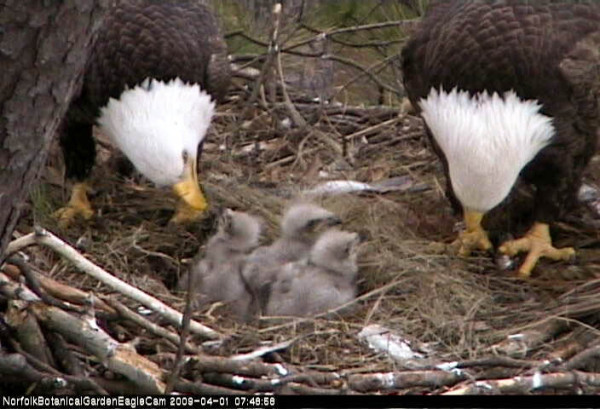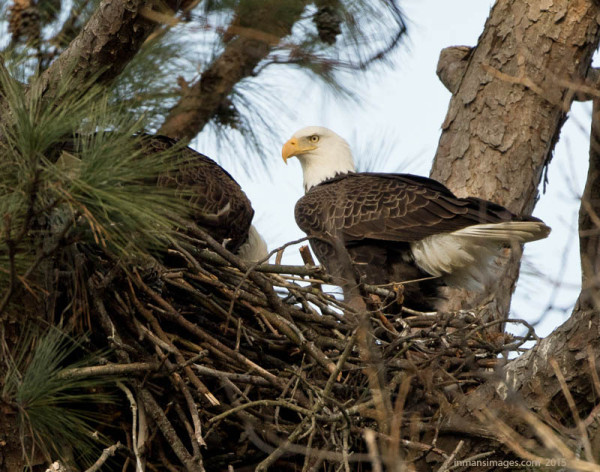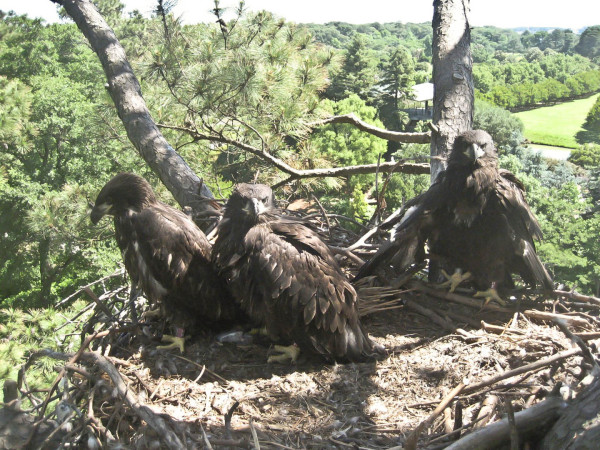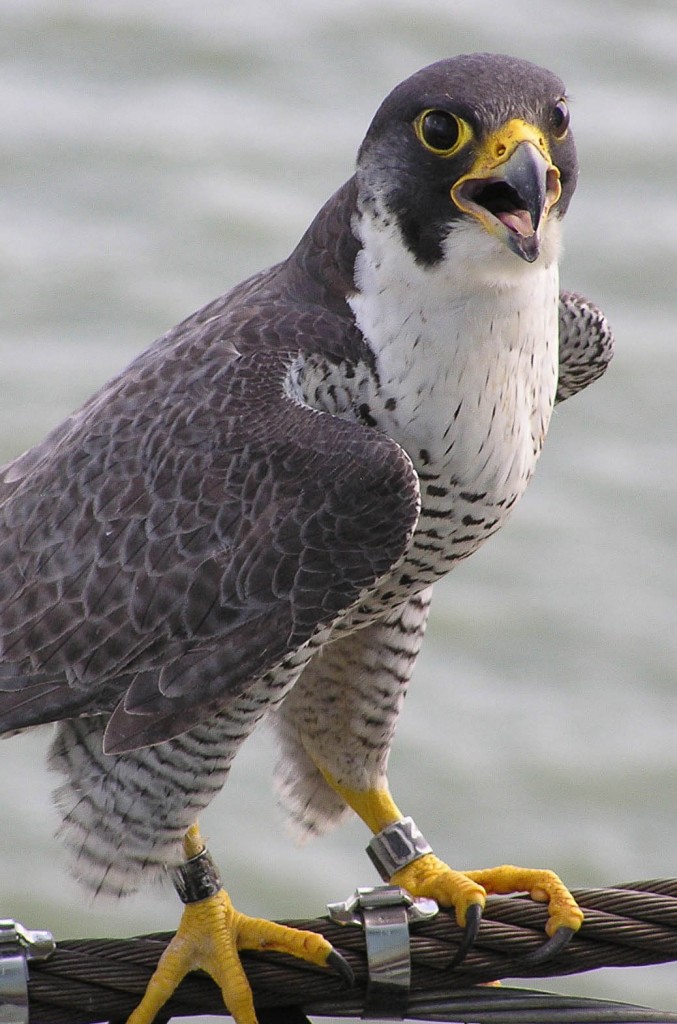Rare father-daughter pairing in eagles from Norfolk Botanical Garden
Grace Returns to Tidewater Research Station 3/11/2015
March 12, 2015
Grace Remains at Tidewater Research Station 3/13/2015
March 14, 2015
Unlike in ancient royal dynasties like the Egyptian Pharaohs or Persians for whom inbreeding was a strategy for sustaining political power over the centuries, breeding with close relatives is rare in wild animal populations. Mating with second cousins or distant relatives may be common, particularly in small populations, but close inbreeding – the mating of full siblings or parents with offspring – has been rarely documented. Close inbreeding leads to inbreeding depression, or a reduction in fitness (ability to survive and reproduce) related to the accumulation of deleterious recessive genes. For this reason, most species have developed inbreeding avoidance mechanisms that reduce the likelihood that close relatives will ever mate. In most raptor species, young disperse substantial distances from the natal territory, greatly reducing the likelihood of future pairings between parents and offspring. In addition, dispersal distance (distance between hatching and breeding locations) is frequently twice as far for females compared to males, making pairings of full siblings unlikely. In a recent paper examining dispersal distances in bald eagles by Brian Millsap and other authors, dispersal of females averaged 138 kilometers (86 miles) whereas males averaged only 59 kilometers (37 miles).

Norfolk Botanical Garden male (left) and female (right) feeding HE, HH (Azalea) and HK. Photo from nest cam by Reese Lukei.
In a rare event, the adult male from the famous Norfolk Botanical Garden nest, followed by thousands of nest cam viewers from around the world, is raising a brood with a female that he produced and raised in 2009. The female, named “HE” after the alpha code on her purple band, is one of three young raised by the male in 2009 that was banded as a nestling by The CCB. Having just reached reproductive maturity, this is the first breeding attempt by HE. Surprisingly, the nest that she built with the male is only 1.6 kilometers (1 mile) from the nest where she was raised. Her extremely short dispersal has led to the unusual pairing.

Photo of HE (right) and father (left) feeding new brood on 12 March 2015. Photo by Mike Inman.
The old male is not banded but has a distinctive black inclusion in his left iris that allows for positive identification. He has held a breeding territory around the Norfolk International Airport since fall 2003. On 26 April 2011 the breeding female of the original pair was struck by a jet and killed. Since that event, many females have passed through the territory attempting to set up house, eventually leading to the successful establishment of HE.

Photo of HE (right), HH (middle) and HK (left) in nest on day of transmitter fitting. Photo by Nuckols Tree Care. Photo by Nuckols Tree Care.
HE was hatched on 21 March 2009 and fledged on 8 June 2009. Her siblings were HH (named “Azalea” and tracked for over 3 years by satellite transmitter) and HK (now with his own breeding territory in Virginia Beach). The entire brood has remained surprisingly close to their natal territory near the airport, making only brief forays outside the lower tidewater area.

Photo of adult male eagle from Norfolk Botanical Garden illustrating black inclusion in left iris. Photo from nest cam by Reese Lukei.
Close inbreeding is difficult to document in wild populations because it requires the marking of individuals such that they may be tracked through time and monitoring to document adult pairings. However, even within intensively managed and marked populations, the occurrence of close inbreeding is rare. Within the mid-Western population of peregrine falcons, only 5 occurrences of close inbreeding were documented in more than 450 pairings. These included 3 pairings of full siblings and 2 pairings of adults and offspring. Interestingly, the pair of peregrines that nested on the James River Bridge in Newport News, Virginia, between 1994 and 2006 nicknamed “Virginia” and “James” were full siblings produced on the Leg-Mason building in Baltimore, Maryland. The pairing was one of the most successful peregrine pair ever documented.

Peregrine nicknamed “James” perched on a cable along the James River Bridge. James and Virginia were full siblings that remained mated for 13 years. Photo by Bryan Watts.
Written by Bryan Watts | bdwatt@wm.edu | (757) 221-2247
March 13, 2015



